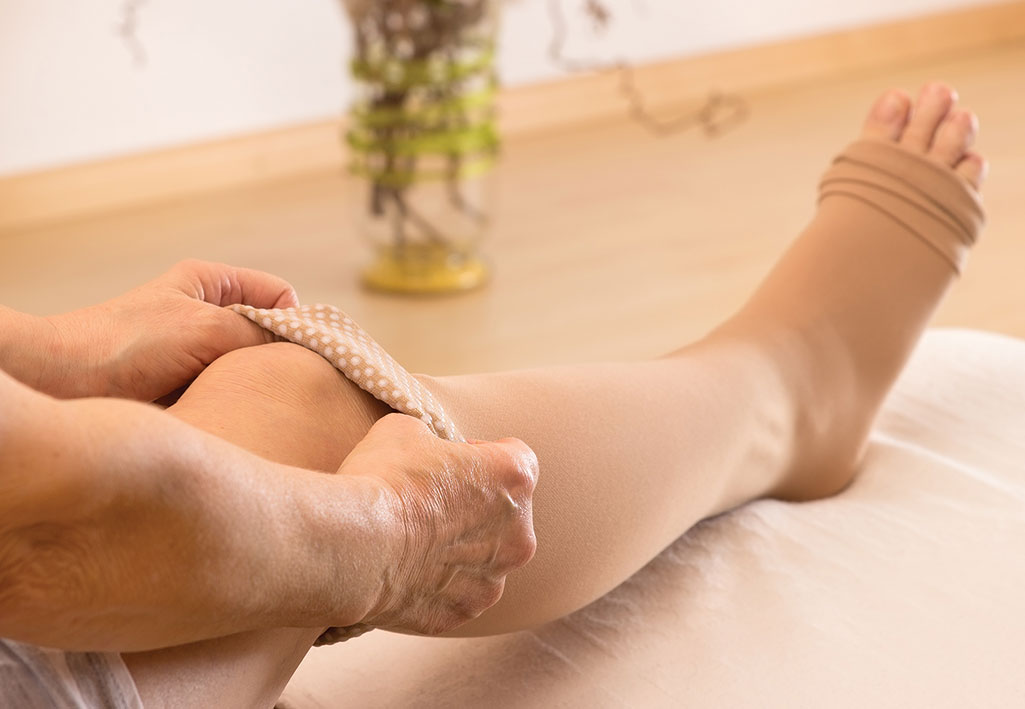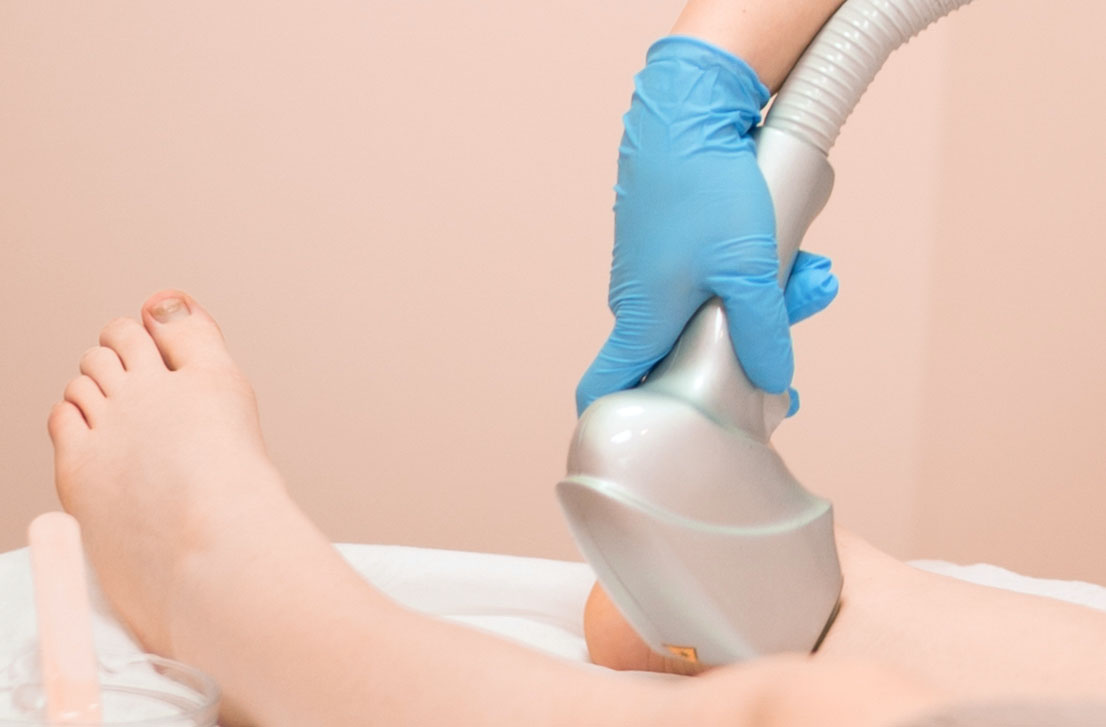There are two approaches to venous disease treatment. The first involves wearing compression hose that apply a graduated pressure on your legs; the second is outpatient surgical treatment.
Compression garments for your legs are tightest at the ankle and decrease in pressure as they move up the leg. This prevents prevent blood from pooling in the legs and ankles by providing support to the veins and skin. Wearing compression hose can alleviate symptoms like aching, pain, and leg fatigue. They also reduce the recurrence of venous ulcers and speed the resolution of phlebitis and DVT (blood clots).

There are many different types of compression hose. Some cover your feet while others are footless, and they come in knee-high, thigh-high, and full-leg lengths or leotard styles in a variety of fabrics and colors, making them virtually indistinguishable from regular socks or tights/pantyhose. They also come in different grades that indicate the amount of pressure exerted by the hose at various points along your legs. We can let you know the right grade for your situation.
Compression hose work best in combination with regular exercise. Our experts recommend 30 minutes a day, but it's important to stay away from heavy lifting or other more strenuous activities, which can worsen venous disease. Your legs and feet function as pumps to help move blood through your veins and back to your heart, so toned calf muscles, strengthened by walking and other lower-body exercise, will help provide more efficient blood flow.
Over 40 million Americans suffer daily with painful, swollen legs as a result of venous disease. In the United States, 25 percent of women and 15 percent of men suffer from this condition. And although venous disease is five times more prevalent than peripheral arterial disease (PAD), a narrowing of the arteries similar to coronary artery disease (CAD), only
3 percent of those with venous disease have been treated.
At the FHN Vein Center, we offer several different types of procedures, all on an outpatient basis. Recovery time is typically quite fast – sometimes just a few hours – and non-cosmetic treatments are usually covered by insurance, including Medicare.
Endovenous laser ablation is the most common procedure, and is considered the "gold standard" in treatment of venous disease. This is a minimally invasive procedure that begins with the insertion of a catheter into an unhealthy vein through a small incision. Numbing solution is then injected around the vein. Next, the laser tip of the catheter heats the inside of the vein, causing the collagen in the vein wall to collapse and seal shut. The body then automatically begins to re-route blood to healthy, functional veins.

This procedure usually takes less than an hour. Patients walk in and walk out of the procedure and continue with their normal everyday activities. There is no downtime and the success rate is an impressive 99 percent.
A phlebectomy is an in-office procedure that involves the removal of bulging varicose veins. The veins that bulge out of the skin are considered secondary varicose veins because they're actually smaller branches of the great saphenous or small saphenous veins.
The great and small saphenous veins are the primary sources of venous insufficiency,
so they must be treated first with endovenous laser ablation. The doctor can then perform a limited phlebectomy to remove the twisted, lumpy varicose veins through small incisions. This procedure takes less than half an hour, doesn't require stitches, and, like laser ablation, has no downtime.
Spider veins are the result of dilated venous capillaries that fill with blood and become visible. These are not considered harmful and are usually treated for cosmetic reasons.
Sclerotherapy is the injection of a sclerosing solution, which works by damaging the cells lining the inside of the veins. This makes blood platelets attach themselves to the lining of the vein. Eventually, cellular debris and platelets clot the vein, causing it to collapse and fade. Over time, the collapsed vein is replaced with tissue free of spider veins.
Several treatments may be necessary, depending on the severity of the spider veins.
Full results can be expected within six months after treatment.
Sclerotherapy is considered an outpatient procedure and is therefore generally not covered by insurance; We can work with you to arrange payment.